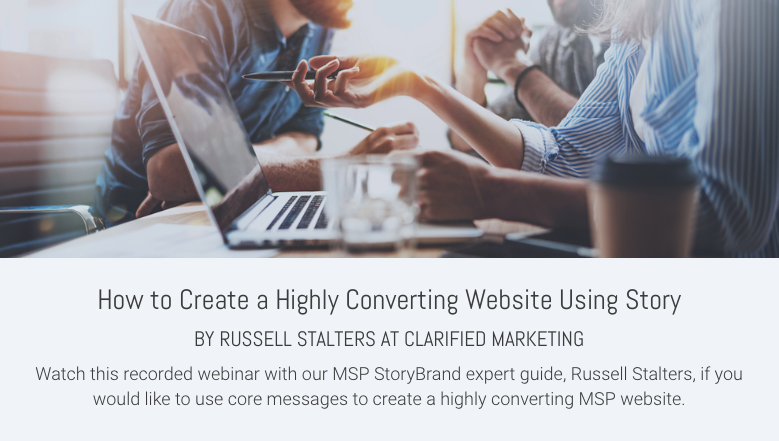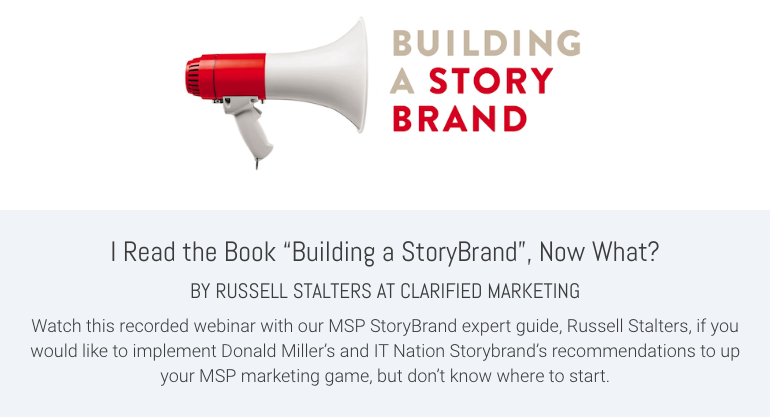Marketing Your MSP Part 2
By Adam Walter on October 25 2021
Apple Podcasts: https://apple.co/2NHRRDl
Spotify: https://spoti.fi/3AyHCUd
In our continued chat with Paul Green, we learned even more about marketing your MSPs through a three-step process. Here’s how it works.
Step one: Build multiple audiences.
Ultimately, you need people to talk to. The more people you have listening, the more likely your company will do well. Your basic audiences are your email and LinkedIn, meaning that those platforms should be given the most attention.
Other audiences could include podcasts, social media platforms and a direct mailing list — all things that you should be implementing in order to have the biggest audience and the biggest impact.
Step two: Create a relationship with your audience.
This relationship-building aspect is all about content. This content should include both education and entertainment in order to fully engage people. When we talk about educating people, it’s best to not get too technical — more low-level stuff that you can explain so any normal person can understand. This will help your audience view you as a helpful resource.
In order to build up your audience, engage with them daily, weekly and monthly. Put out relevant social media content daily. Curate this content from the mindset and eyes of the consumer. Send out a weekly email to teach your audience something that they do not know that will help them learn. Create and send out a monthly newsletter, giving your audience something to physically hold, read and pass along.
Another fun tip is to keep a dream 100 list. This list is the top 100 people you dream of working with that you actively engage and maintain relationships with.
Step three: Commercialize your audience.
This step is mostly done over the phone. It can be done by either you or someone that you know who is warm, friendly and great with people. Pick up the phone and call all of the people who you engage with, either by email, social media, direct mail and more. This isn’t a sales tactic — it’s a chance to talk to people about what they love to chat about most: themselves.
Human relationships are very important so using this three-step process will ensure you create and maintain great relationships with your audience and ensure success for your MSP.
How to Make Managed Service Provider Marketing Better
By Russell Stalters on September 11 2019
Here are two ways to make your making better.
Managed Service Providers (MSPs) most often have really complex solutions. One challenge most people in the IT industry suffer is the “curse of knowledge”. The term was coined by Chip and Dan Heath back in 2006 and then they wrote about it in their 2007 book, “Made to Stick: Why Some Ideas Survive and Others Die”. Later, Lee Lefever described practical ways to combat the “curse of knowledge” in his book “The Art of Explanation: Making your Ideas, Products, and Services Easier to Understand”. I highly recommend both of these books to anyone who is marketing and selling IT solutions.
With the curse of knowledge, we know our product or service so well we have a difficult time imagining what it is like to not know it. This seems to be especially true with technical fields and IT professionals. Our technical and inside knowledge interferes with our ability to see the world from another person’s perspective. We wind up talking over the heads of our customers.
Remember we live in a very “noisy” world and we need to grab their attention in less than a couple of seconds. This is an area that many of my clients struggle with.
On a scale of 1 to 10, where 10 is the complexity we as MSPs live day in and day out, and where 1 is super simple, we need to be at a 2 or 3. Most of my clients have their marketing “dumbed down” to a 7 or 8 and our customers will be attracted to and understand messages that are at a 2 or 3. The good news is that after you work on simplifying the way you talk about your solution to your customer’s problem, customers will listen.
We live in a very distracting world. One of the other ways to cut through the noise is through story. Think about it. Until the printing press and the proliferation of books, story was the primary method of communication and passing on information. Story helps cut through the noise by organizing information in a way people will listen. Facts, figures, and features are boring.
Neuroscientists estimate humans spend more than 30% of their time daydreaming. Think about the last time you watched a great movie with a great story – were you daydreaming? We can use story to help our customers see how we can solve their problem and what their life will look like after they buy our product or service.
A list of features or benefits by themselves will not sell your services. Use a story of a customer’s journey from frustration and challenge to success with your solution and services. Every person intuitively understands a good story and is working at living her own story. If your business could understand the story your customers are living in relationship to your brand, you can stop selling products and services and instead invite customers into a story. Their Story. By positioning your company as the guide in your customer’s story, you can more easily speak to your customer’s needs.
One of the best ways to create your customer’s story is to use the StoryBrand methodology as described in Donald Miller’s book “Building a StoryBrand: Clarify Your Message So Customers Will Listen”. As a StoryBrand Guide I help MSPs implement the StoryBrand methodology to attract their ideal clients, get more meetings, and grow their business.



